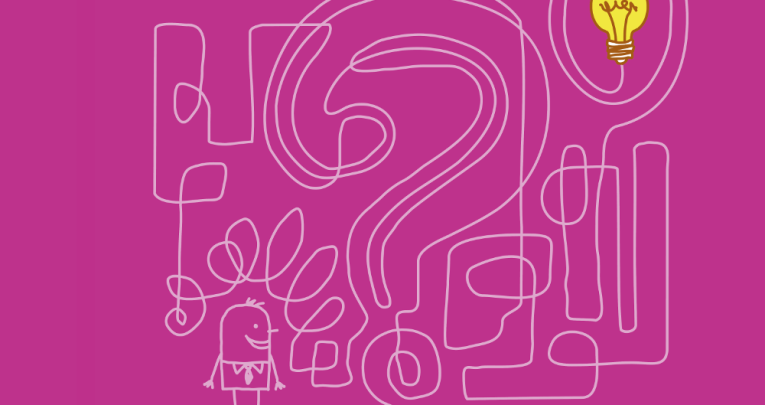How to…put knowledge at the centre of your curriculum

There should be awe and wonder in the classroom, but it should be the substance of the subject that is awesome and wondrous…

Over the course of this series on curriculum in primary, I’ve attempted to lay out a roadmap for putting knowledge back at the centre of each subject.
Instead of thinking about fun activities that will fill the afternoon slot, I’ve set out how to curate the core facts, figures, people, processes and concepts necessary to master a unit of work.
Vague mishmash topics were banished, with clear and distinct areas of study identified. Learning has been (re)defined as creating relatively permanent changes in long-term memory, and developing increasingly sophisticated schemas so that pupils are able to engage in abstract thinking.
But perhaps the arguments for such an approach don’t matter any more. Ofsted has pulled its big curriculum lever, and ‘deep dive’ squadrons have been deployed to interrogate poor subject leads in the manner of Monty Python’s Spanish Inquisition.
Like it or not, your curriculum needs to be rigorous and sequenced and rich in cultural capital, whatever that means this week.
Fun factor
Way back in the March issue of Teach Primary I began by unpacking Ofsted’s rationale in placing foundation subjects under the microscope, and suggested that this was actually a Good Thing.
I argued that such a move should inspire a warm tingle of excitement, instead of provoking a cold shiver of fear down the spine.
Turning our attention to the knowledge that all pupils should remember in the long term has, therefore, meant that previous articles have focused on practices like frequent quizzing, and writing detailed essays.
Such an approach inevitably means reducing some elements of school that pupils and teachers find the most enjoyable. The fact that the school day is stubbornly finite in nature means that you only get to spend each lesson once.
If we hope to raise expectations in terms of the level of detail in which pupils study their new topic, something else has to go.
Classroom favourites like custard cream Stonehenge, sugar cube pyramids and painted Roman shields find it increasingly difficult to justify the curriculum time that they occupy, especially when faced with the harsh reality that pupils don’t really learn anything while doing them.
All of this means that I can sometimes feel like the Grim Reaper of topic, moving from classroom to classroom, stealing joy wherever I go. And it’s true that I don’t shy away from confronting the trade-offs that we need to make.
However, this is not iconoclasm for its own sake.
Working in an all-through school, as I am lucky enough to do, gives the opportunity to witness a child’s entire journey through school.
Seeing pupils woefully under-prepared for GCSEs due to the paucity in their background knowledge gives a fresh perspective on the precious time that we have with our children.
Counselling them with the fact that they really enjoyed making a papier-mâché volcano in Y3 doesn’t seem to do much good.
But wait. Taking a knowledge-rich approach does not preclude any engaging activities from taking place in the classroom. Quite the opposite. The important criterion is that it should be the subject itself that is engaging.
The activity should not be designed to distract children’s thinking from the core content, but rather to focus their attention upon it more fully.
There should be an element of awe and wonder in the classroom, but it should be the substance of the subject that is awesome and wondrous.
There are countless ways to bring a subject to life that require pencils and booklets to stay on the shelf – activities that engage the heart as well as the mind. Not all lessons can be steeped in dizzying emotional heights, but when those opportunities arise, we should grasp them with both hands.
More than this, we should actively plan to weave them into our curriculum programmes. We might call this element of the curriculum ‘enrichment’.
Educational visits
School trips, of course, are a fantastic opportunity to enrich any subject. History is particularly ripe for such an approach. A trip to a local museum or site of archaeological interest is an excellent way to exemplify learning in a very concrete fashion.
However, since taking a more knowledge-rich approach to curriculum, I have made one significant change to the way that I plan trips. Whereas previously they would come towards the start of a topic, often as a ‘launchpad day’, I now ensure that they are planned at the end.
This is because trips are so much more interesting for pupils when they already know a lot about what they will be seeing with their own eyes.
A few years ago I took my Y4 class to Westminster Abbey, following a full half-term’s learning about England’s monarchs from William the Conqueror to Elizabeth I.
The first thing that they saw upon entering was the coronation chair. “It’s Edward’s chair!” they whispered to each other. They immediately peppered our poor guide with questions about the Stone of Scone and where it slotted in.
Later, as we approached Elizabeth I’s tomb, the pupils looked puzzled. Why was she sharing a tomb with her sister, Bloody Mary, they asked me, given their religious conflict and awful history?
Instead of another old church, though slightly bigger than those that they had seen before, Westminster Abbey now crackled with meaning and connection. The knowledge that they had been carefully taught drenched every tomb, artefact, wall and ceiling.
Telling tales
It is not only trips out of school that can enrich a curriculum, though. Storytelling can be used to encapsulate children while providing key information about their topic.
Taking the time to script a tale about the birth of Romulus and Remus is a wonderful way to spend PPA, and will have pupils hanging on your every word.
Further, there are also countless high-quality documentaries and video clips now available on the internet, with the BBC being an excellent place to start.
Any geography lesson, for example, can be vividly brought to life by David Attenborough and his flawless back catalogue.
Practicality
We have also recently ensured that all science lessons include a practical element. This has meant increasing lessons to 90 minutes, to ensure that knowledge can be explicitly taught before enrichment through experimentation.
Many museums will also travel to schools to provide demonstrations linked to national curriculum topics. Balancing act Getting this balance right requires careful planning, though.
Our ‘knowledge lessons’, set out in booklets, account for around 75% of curriculum time. This leaves teachers with several lessons to plan these enriching activities.
Since the other lessons are already set out in detail, they have more time and headspace to be able to do so, and can ensure that the activities are anchored within the discipline.
To be clear, then, enrichment activities – which used to dominate topic at the expense of the subject – should not be thrown out altogether. When properly planned, rich knowledge and such experiences are mutually reinforcing.
Sure, we should focus on long-term memory and making the knowledge unforgettable, but at the same time, we must remember to make the curriculum unforgettable.
Find all six articles in this series on taking a curriculum deep dive, here.
Jon Hutchinson is assistant headteacher at Reach Academy Feltham. Follow him on Twitter at @jon_hutchinson_.












